
Ramat Gan: The Green Jewel of Israel
Discover Ramat Gan, Israel's green jewel, where urban sophistication meets natural beauty. Explore parks, diamond districts, and vibrant cultural scenes in this serene city.
Located just east of Tel Aviv, Ramat Gan is a vibrant city that offers a blend of urban sophistication and natural beauty. Known for its lush parks, Ramat Gan is often referred to as the 'green lung' of the Tel Aviv District. Visitors can enjoy the serenity of the National Park, which features a large lake, botanical gardens, and a zoo, making it perfect for a family day out. Ramat Gan is also a cultural hub, home to the world-renowned Diamond Exchange District. Here, you can learn about the fascinating world of diamond trading and perhaps even purchase a sparkling souvenir. The city's Museum of Israeli Art showcases contemporary works, while the Harry Oppenheimer Diamond Museum provides an in-depth look into the history and craftsmanship of diamonds. For those interested in shopping and dining, Ramat Gan offers a variety of options. The Ayalon Mall is one of the largest in the area, featuring international brands and local boutiques. Culinary enthusiasts will find a range of eateries offering everything from traditional Israeli cuisine to international dishes. Don't miss the local bakeries, where you can savor fresh pastries and breads. Despite its modern amenities, Ramat Gan retains a laid-back charm. Its tree-lined streets and welcoming atmosphere make it an ideal destination for tourists looking to experience both the hustle and bustle of city life and the tranquility of nature.
Local tips in Ramat Gan
- Visit the National Park early in the morning to avoid crowds and enjoy a peaceful walk.
- The Diamond Exchange District offers guided tours, but it's best to book in advance.
- Public transportation is efficient, but renting a bike can be a fun way to explore the city.
- Most shops and restaurants close early on Fridays and remain closed on Saturdays for Shabbat.
- Check out the local markets for fresh produce and unique souvenirs.
Ramat Gan: The Green Jewel of Israel
Located just east of Tel Aviv, Ramat Gan is a vibrant city that offers a blend of urban sophistication and natural beauty. Known for its lush parks, Ramat Gan is often referred to as the 'green lung' of the Tel Aviv District. Visitors can enjoy the serenity of the National Park, which features a large lake, botanical gardens, and a zoo, making it perfect for a family day out. Ramat Gan is also a cultural hub, home to the world-renowned Diamond Exchange District. Here, you can learn about the fascinating world of diamond trading and perhaps even purchase a sparkling souvenir. The city's Museum of Israeli Art showcases contemporary works, while the Harry Oppenheimer Diamond Museum provides an in-depth look into the history and craftsmanship of diamonds. For those interested in shopping and dining, Ramat Gan offers a variety of options. The Ayalon Mall is one of the largest in the area, featuring international brands and local boutiques. Culinary enthusiasts will find a range of eateries offering everything from traditional Israeli cuisine to international dishes. Don't miss the local bakeries, where you can savor fresh pastries and breads. Despite its modern amenities, Ramat Gan retains a laid-back charm. Its tree-lined streets and welcoming atmosphere make it an ideal destination for tourists looking to experience both the hustle and bustle of city life and the tranquility of nature.
When is the best time to go to Ramat Gan?
Iconic landmarks you can’t miss
Ramat Gan National Park
Discover Ramat Gan National Park: An urban oasis of trails, nature, and family-friendly activities in the heart of Israel.

Safari
Explore Safari in Ramat Gan: A premier wildlife park showcasing diverse animal species and promoting conservation through unforgettable experiences.

Yarkon Park
Discover the natural beauty of Yarkon Park, Tel Aviv's largest park, featuring lush landscapes, recreational activities, and serene river views.
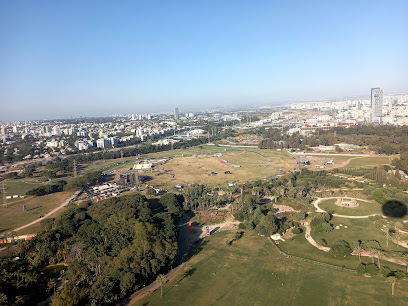
Leonardo City Tower
Discover unparalleled luxury and comfort at Leonardo City Tower, the ultimate destination for travelers seeking elegance in Ramat Gan, near Tel Aviv.

David Melmedovich Park (Marom Nave)
Explore the lush landscapes and tranquil atmosphere of David Melmedovich Park in Ramat Gan, a perfect getaway for nature lovers and families alike.

Marom Mall
Experience the vibrant shopping scene and diverse dining options at Marom Mall, a key attraction in Ramat Gan for tourists and locals alike.

Bowling Ramat Gan
Enjoy an unforgettable bowling experience at Bowling Ramat Gan, where fun meets entertainment in a vibrant atmosphere perfect for all ages.

Yahalom Theatre
Discover the vibrant arts scene at Yahalom Theatre in Ramat Gan, where diverse performances come to life in a captivating cultural hub.

Ramat Aviv Mall
Discover Ramat Aviv Mall in Tel Aviv - a vibrant shopping destination offering a blend of luxury brands, dining experiences, and entertainment.

Ramat Gan Stadium
Experience the thrill of soccer at Ramat Gan Stadium, a premier venue in Israel known for its passionate games and vibrant atmosphere.

Golda
Discover Golda in Ramat Gan, where delightful ice cream flavors and a welcoming atmosphere await every visitor.

Hotel Indigo Tel Aviv - Diamond District, an IHG Hotel
Experience luxury and modern design at Hotel Indigo Tel Aviv, the perfect base for exploring the vibrant culture and attractions of Ramat Gan.

Har HaBanim Garden
Discover the serene beauty of Har HaBanim Garden in Ramat Gan, a perfect park for relaxation, picnics, and enjoying nature in the heart of the city.

אמות ATRIUM
Explore the dynamic Amout ATRIUM in Ramat Gan, a premier office space rental agency with modern facilities and investment opportunities for businesses.

Ramat Gan Museum of Israeli Art
Explore the vibrant world of contemporary Israeli art at the Ramat Gan Museum, a cultural gem featuring diverse exhibitions and a creative atmosphere.

Unmissable attractions to see
Mahaneh Yehudah Market
Experience the vibrant atmosphere of Mahaneh Yehudah Market, Jerusalem's cultural and culinary hotspot, filled with fresh produce, delicious street food, and local crafts.

Church of the Holy Sepulchre
Explore the Church of the Holy Sepulchre in Jerusalem, a historic pilgrimage site revered for its sacred significance and stunning architecture.
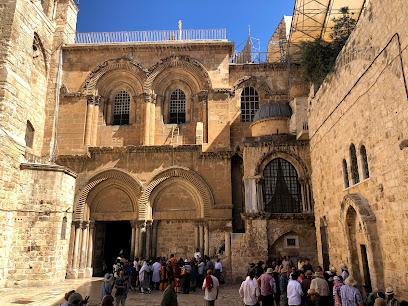
Ramat Gan National Park
Discover the lush beauty and recreational activities at Ramat Gan National Park, a must-visit urban oasis in Israel perfect for families and nature lovers.
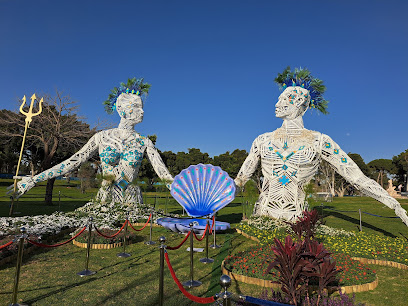
Safari
Discover the wildlife wonders of Safari in Ramat Gan, a unique urban safari park offering unforgettable animal encounters and educational experiences for all ages.

Yarkon Park
Discover the lush landscapes and recreational delights of Yarkon Park, a must-visit urban gem in Tel Aviv, perfect for relaxation and adventure.

Yarkon Park
Explore Yarkon Park, a lush urban oasis in Tel Aviv-Yafo, ideal for picnics, cycling, and enjoying nature amidst the vibrant city.

Yad Vashem
Explore Yad Vashem, an essential cultural center in Jerusalem dedicated to Holocaust remembrance, education, and honoring the victims of history's darkest chapter.

Jaffa Flea Market
Explore the Jaffa Flea Market in Tel Aviv-Yafo for a vibrant blend of culture, vintage treasures, and delicious local cuisine.

The Israel Museum, Jerusalem
Uncover the rich tapestry of art and history at The Israel Museum, Jerusalem, a premier destination for cultural explorers.

The Clock Tower
Discover the iconic Clock Tower in Tel Aviv-Yafo: a historical landmark blending rich culture with vibrant city life, perfect for every traveler.

Tel Aviv Museum of Art
Explore the captivating world of art at the Tel Aviv Museum of Art, featuring both contemporary and classic masterpieces in a stunning architectural setting.
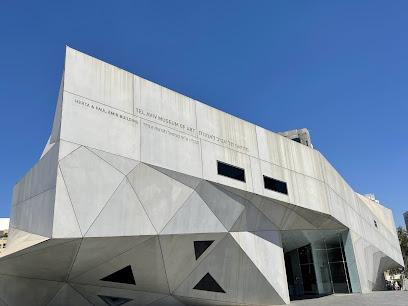
Sacher Park
Discover Sacher Park, a lush urban haven in Jerusalem for relaxation, family fun, and scenic views amidst the city's historic charm.

Park HaTachana
Discover the charm of Park HaTachana in Tel Aviv-Yafo, where history meets modern culture in a vibrant park filled with shops, eateries, and events.

Levinski Market
Explore the vibrant Levinski Market in Tel Aviv-Yafo, a culinary paradise filled with fresh produce, gourmet foods, and local culture.
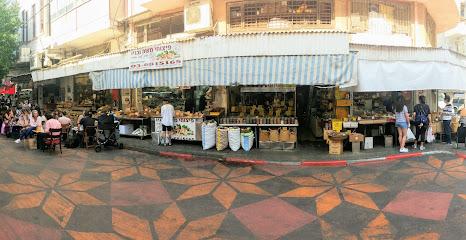
Luna Park
Discover a world of fun and excitement at Luna Park, Tel Aviv's iconic amusement park, perfect for all ages with thrilling rides and entertainment.

Essential places to dine
Safsal
Experience the vibrant atmosphere and delectable cuisine at Safsal in Ramat Gan - where every meal is a celebration!

Joy Garden
Discover Joy Garden in Ramat Gan - where exquisite dining meets nature's tranquility.

מפגש גרונר רמת גן
Experience authentic Israeli flavors at Mifgash Gruner - where delicious gyros and shawarma await in Ramat Gan's vibrant culinary scene.

Deda
Discover Deda: A Gem of Georgian Cuisine in Giv'atayim Offering Authentic Flavors and Warm Hospitality.

שיפודי חן רמת גן
Discover the authentic taste of Middle Eastern grilled delights at Shipudei Chen in Ramat Gan - perfect for dine-in or takeaway!

Shula BaHatzer
Experience the best of Israeli cuisine at Shula BaHatzer in Ramat Gan—where flavors meet tradition in a delightful atmosphere.

Tommy Roll
Experience the vibrant flavors of Tommy Roll in Ramat Gan – where culinary excellence meets affordability in every bite.

La Cucina Pasta Bar
Experience authentic Italian cuisine at La Cucina Pasta Bar in Ramat Gan, offering delectable homemade pasta and gluten-free options.
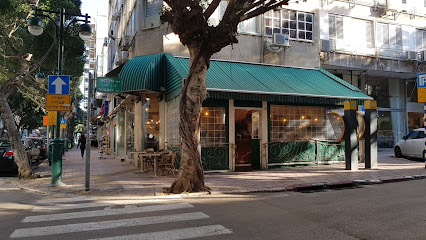
G27
Discover the delightful flavors of G27 in Ramat Gan – an exceptional dining experience awaits you!

The Original Sabich Buffet
Discover authentic Israeli cuisine at The Original Sabich Buffet - where every bite tells a story.

Spicy Grill Bar
Experience the best of kosher dining at Spicy Grill Bar with delicious barbecue and South American flavors in Ramat Gan.

Rodeo
Experience authentic American cuisine at Rodeo in Ramat Gan - home of delicious burgers and traditional diner vibes.

Cafe Geva
Discover the authentic taste of Italy at Café Geva in Ramat Gan - where Italian cuisine meets cozy café culture.

פקוס
Discover the flavors of Ramat Gan at פקוס - where exceptional cuisine meets warm hospitality in an inviting atmosphere.

פלאזה PLAZA
Discover the vibrant flavors and lively atmosphere at פלאזה PLAZA - where culinary excellence meets social delight in Ramat Gan.

Markets, malls and hidden boutiques
Ayalon Mall
Discover Ayalon Mall in Ramat Gan: A vibrant shopping hub with diverse stores, dining options, and entertainment experiences for all ages.

Bialik Mall
Explore Bialik Mall in Ramat Gan for a delightful shopping experience with trendy stores, cozy cafes, and a taste of local culture.
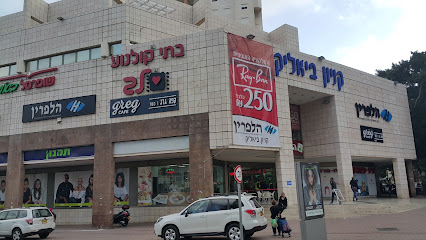
Marom Mall
Explore the vibrant Marom Mall in Ramat Gan, featuring diverse shops, delicious dining options, and a lively atmosphere for every tourist.

Ramat Aviv Mall
Discover the vibrant shopping scene at Ramat Aviv Mall, Tel Aviv's premier destination for fashion, dining, and entertainment.

Mania Ramat Gan
Explore unique gourmet foods and fresh ingredients at Mania Ramat Gan, a culinary paradise for food enthusiasts in Ramat Gan.

hamezion second hand
Explore Hamezion Second Hand Store in Ramat Gan for unique treasures, vintage fashion, and sustainable shopping experiences.

Hclbtol pet shop in Ramat Gan
Explore Hclbtol Pet Shop in Ramat Gan for a diverse selection of pet supplies and a welcoming community atmosphere for animal lovers.
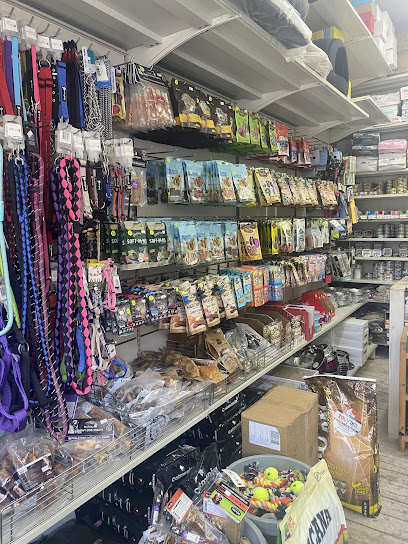
IDC Israel Diamond Center
Discover the brilliance of diamonds at IDC Israel Diamond Center, a premier jewelry destination in Ramat Gan, where luxury meets craftsmanship.

DODO&DELI
Discover the flavorful delights of DODO&DELI in Ramat Gan, where traditional deli fare meets modern culinary creativity.

blockim-בלוקים
Discover the playful spirit of Ramat Gan at Blockim, the ultimate novelty store for unique souvenirs and charming gifts.

סלבריישן ביי אוראל - אביזרי קונספט | אפייה ועוגות | ימי הולדת קונספט לילדים | קישוטים
Discover an array of unique party supplies, custom cakes, and themed decorations at Celebration Bay in Ramat Gan for unforgettable celebrations.

Miniso
Explore Miniso in Ramat Gan for affordable home goods, quirky gadgets, and unique gifts that add charm to your life.

Hoodies Merom Neveh Ofer Mall
Explore trendy styles and unique fashion finds at Hoodies Merom Neveh Ofer Mall, Ramat Gan's premier clothing destination.
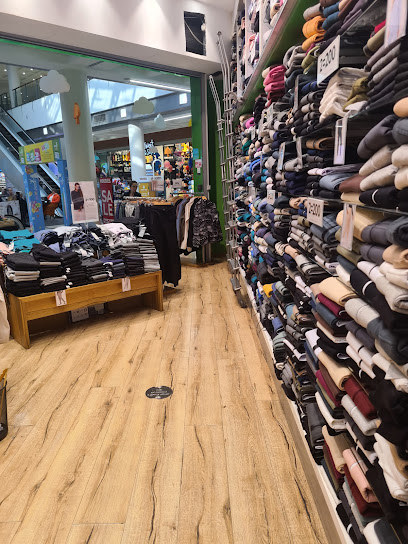
Ora sketching moments - אמנות מקורית בסיפור אישי
Explore personalized art at Ora Sketching Moments, where every piece tells a unique story and creativity comes to life.

Miler's Kids | מילרס קידס | בגדים לילדים עם סטייל ברמת גן
Explore Miler's Kids in Ramat Gan for trendy and stylish children's clothing that combines comfort and quality in every piece.

Essential bars & hidden hideouts
Frug & Co.
Discover the vibrant atmosphere, delicious cocktails, and unique pizza delivery at Frug & Co. in Ramat Gan, a must-visit destination for nightlife lovers.

קרמיט בר - Kermeet Bar
Discover Kermeet Bar in Ramat Gan: A gastropub offering a delightful blend of gourmet food, craft drinks, and a vibrant nightlife experience.

רייצ'לס בר רמת גן Rachel's bar
Experience the lively atmosphere and great drinks at Rachel's Bar, a hotspot for both locals and tourists in Ramat Gan's nightlife.

פלאזה PLAZA
Discover the vibrant atmosphere and unique culinary offerings at פלאזה PLAZA, an exciting bar and restaurant in Ramat Gan, Israel.

Bendi Bar
Discover the dynamic atmosphere of Bendi Bar in Ramat Gan - where delicious food meets vibrant nightlife for an unforgettable experience.

SWING Bar
Experience the lively atmosphere and delicious menu at SWING Bar in Ramat Gan, your go-to destination for food, drinks, and fun.

הרציף
Immerse yourself in the vibrant nightlife of Ramat Gan at הרִצֵיף, where exceptional drinks and a lively atmosphere await.

זולה בר | Zula Bar
Discover the lively Zula Bar in Ramat Gan, where innovative cocktails and a vibrant atmosphere create the perfect nightlife experience.

בר-רגל
Discover Ramat Gan's nightlife at Bar Regel, where lively ambiance meets exceptional drinks and delicious bites.

Full Moon Bar | פול מון בר
Discover the eclectic vibes of Full Moon Bar in Ramat Gan, where cocktails, games, and nightlife converge for an unforgettable evening.

mashkaot bar
Experience the vibrant nightlife of Ramat Gan at Mashkaot Bar, where exquisite drinks and live entertainment create unforgettable moments.

מרסלה Marcella wine bar
Discover the exquisite taste of wines and artisanal bites at Marcella Wine Bar in Ramat Gan, a true haven for wine lovers.

Chaser5
Experience the vibrant atmosphere and delectable Bavarian cuisine at Chaser5, your go-to pub and barbecue restaurant in Ramat Gan.
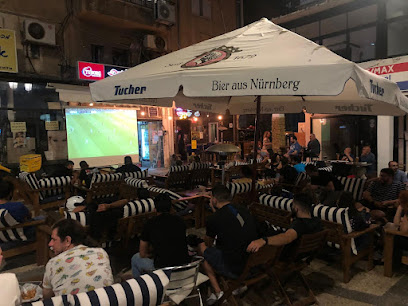
בר שומשום
Discover the lively nightlife at בר שומשום, Ramat Gan's favorite bar, offering a unique blend of local culture and vibrant ambiance.

PURA VIDA
Discover the lively sports bar Pura Vida in Ramat Gan, where great food, drinks, and live sports come together for an unforgettable experience.

Local Phrases
-
- Helloשָׁלוֹם
[Shalom] - Goodbyeלְהֵיתָרוּת
[Lehitra'ot] - Yesכֵּן
[Ken] - Noלֹא
[Lo] - Please/You're welcomeבְּבַקָשָׁה
[Bevakasha] - Thank youתוֹדָה רַבָּה
[Toda raba] - Excuse me/Sorryסְלִיחָה
[Slicha] - How are you?אֵיך אַתָה?
[Eich atah?] - Fine. And you?טוֹב. וְאַתָה?
[Tov. Ve'atah?] - Do you speak English?הַאִם אַתֶם מְדַבְּרִים אַנְגְלִית?
[Haim atem medabrim anglit?] - I don't understandאֲנִי לֹא מֵבִין
[Ani lo mevin]
- Helloשָׁלוֹם
-
- I'd like to see the menu, pleaseאֲנִי רוֹצֶה לִרְאוֹת אֶת הַתַפְרִיט, בְּבַקָשָׁה
[Ani rotzeh lirot et hataprit, bevakasha] - I don't eat meatאֲנִי לֹא אוֹכֵל בָשָׂר
[Ani lo ochel basar] - Cheers!לְחַיִים!
[Lechaim!] - I would like to pay, pleaseאֲנִי רוֹצֶה לְשַלֵם, בְּבַקָשָׁה
[Ani rotzeh leshalem, bevakasha]
- I'd like to see the menu, pleaseאֲנִי רוֹצֶה לִרְאוֹת אֶת הַתַפְרִיט, בְּבַקָשָׁה
-
- Help!עֶזְרָה!
[Ezrah!] - Go away!לֵך וְתֵלֵך!
[Lech vetlech!] - Call the Police!הַתְקִיף אֶת הַמִּשְׁטָרָה!
[Hatki af et hamishtara!] - Call a doctor!הַתְקִיף רוֹפֶא!
[Hatki rofe!] - I'm lostאֲנִי אוֹבֵד דֶרֶך
[Ani oved derech] - I'm illאֲנִי חוֹלֶה
[Ani holeh]
- Help!עֶזְרָה!
-
- I'd like to buy...אֲנִי רוֹצֶה לִקְנוֹת...
[Ani rotzeh liknot...] - I'm just lookingאֲנִי רַק רוֹאֶה
[Ani rak roeh] - How much is it?כַּמָה זֶה עוֹלֶה?
[Kama zeh oleh?] - That's too expensiveזֶה יָקָר מִדַי
[Zeh yakar midai] - Can you lower the price?הֲאַתָה יָכוֹל לְהוֹרִיד אֶת הַמְחִיר?
[Hatah yachol lehorid et hamachir?]
- I'd like to buy...אֲנִי רוֹצֶה לִקְנוֹת...
-
- What time is it?מַה הַשָּעָה?
[Ma hashaa?] - It's one o'clockזֶה אַחַת
[Zehachat] - Half past (10)חֲצִי
[Chatzi] - Morningבֹּקֶר
[Boker] - Afternoonצהריים
[Tzohorayim] - Eveningעֶרֶב
[Erev] - Yesterdayאֶתמוֹל
[Etmol] - Todayהַיוֹם
[Hayom] - Tomorrowמָחָר
[Machar] - 1אֶחָד
[Echad] - 2שתיים
[Shtayim] - 3שלוש
[Shalosh] - 4אַרְבַּע
[Arba] - 5חֲמִשָּׁה
[Chamisha] - 6שִׁשָּׁה
[Shisha] - 7שִׁבְעָה
[Shiv'a] - 8שְׁמוֹנָה
[Shmona] - 9תִּשְׁעָה
[Tisha] - 10עֶשֶׂר
[Eser]
- What time is it?מַה הַשָּעָה?
-
- Where's a/the...?אֵיפֹה הַ...
[Eifo ha...] - What's the address?מַה הַכְתוֹבֶת?
[Ma haktovet?] - Can you show me (on the map)?אַתָה יָכוֹל לְהַרְאוֹת לִי (עַל הַמַפָּה)?
[Atah yachol leha'arot li (al hamapa)?] - When's the next (bus)?מָתַי הַאוֹטוֹבוּס הַבָּא?
[Matai haotobus haba?] - A ticket (to ....)כַּרְטִיס (ל...)
[Kartis (le...)]
- Where's a/the...?אֵיפֹה הַ...
History of Ramat Gan
-
Ramat Gan was officially established in April 1921 as a moshava, a type of rural community. It was founded by a group of Jewish immigrants from Eastern Europe who sought to create an agricultural settlement. The founders were inspired by the Zionist vision of returning to the land and creating a self-sufficient community. Initially, the settlers focused on agricultural activities, particularly citrus farming.
-
By the 1930s, Ramat Gan began transitioning from an agricultural settlement to a more urbanized area. The city saw the development of residential neighborhoods, schools, and commercial enterprises. The Hebrew University of Jerusalem even established an agricultural school in the area, which further contributed to its growth and urbanization.
-
During World War II and the British Mandate period, Ramat Gan played a significant role in the Jewish resistance movement. The city was a hub for the Haganah, the main Jewish paramilitary organization, and many clandestine activities were planned and executed from within Ramat Gan. The city's residents were actively involved in the struggle for Israeli independence.
-
After the establishment of the State of Israel in 1948, Ramat Gan experienced a significant population boom. The city expanded rapidly as new immigrants arrived from around the world. This period saw the construction of new neighborhoods, schools, and hospitals, transforming Ramat Gan into a modern urban center.
-
One of the most significant milestones in the history of Ramat Gan was the establishment of Bar-Ilan University in 1955. Founded by the Religious Zionist movement, the university aimed to integrate Jewish studies with secular academic disciplines. Today, Bar-Ilan University is one of Israel's leading academic institutions and a central feature of Ramat Gan's cultural and educational landscape.
-
In the 1960s, Ramat Gan became home to the Israel Diamond Exchange, one of the largest and most significant diamond exchanges in the world. The Diamond Exchange District, known as the 'Bursa,' quickly developed into a major economic hub, attracting businesses and professionals from around the globe. This development significantly boosted the city's economy and international standing.
-
Ramat Gan has a rich cultural history, marked by the establishment of institutions like the Ramat Gan National Park, the second-largest urban park in Israel, and the Ramat Gan Safari, the largest animal collection in the Middle East. The city also hosts the Museum of Israeli Art and the Harry Oppenheimer Diamond Museum, which reflect its diverse cultural and economic heritage.
-
Today, Ramat Gan is a bustling urban center known for its high quality of life, diverse population, and vibrant cultural scene. It is a center for education, healthcare, and high-tech industries, with numerous parks, museums, and cultural institutions. The city's skyline is marked by modern skyscrapers, and its streets are filled with cafes, restaurants, and shops, making it a dynamic and attractive place to live and visit.
Ramat Gan Essentials
-
Ramat Gan is located in the Tel Aviv District of Israel. The nearest international airport is Ben Gurion Airport, approximately 20 kilometers away. From the airport, you can take a taxi, a private shuttle, or use the train service to Tel Aviv Savidor Central Railway Station and then transfer to a bus or taxi to reach Ramat Gan. The journey typically takes around 30 minutes by road.
-
Ramat Gan has an efficient public transportation network, including buses and shared taxis (known as Sherut). The city is well-connected to Tel Aviv and other neighboring areas. Taxis are readily available, and ride-sharing apps like Gett and Yango are popular. For those who prefer to drive, car rental services are available. Biking is also a viable option with bike lanes present in many parts of the city.
-
The official currency in Israel is the New Israeli Shekel (NIS). Credit cards are widely accepted in hotels, restaurants, and shops. ATMs are plentiful, and you can easily withdraw cash using international credit or debit cards. It is advisable to carry some cash for small purchases or in places that do not accept cards.
-
Ramat Gan is generally considered a safe destination for tourists. However, standard precautions should be taken. Avoid walking alone at night in unfamiliar areas and be vigilant with your belongings in crowded places. While there are no specific high-crime areas targeting tourists, it is always best to remain aware of your surroundings.
-
In case of emergency, dial 100 for police, 101 for medical services, and 102 for fire services. Ramat Gan has several hospitals and medical centers for emergencies. It is recommended to have travel insurance that covers medical emergencies. Pharmacies are widely available for minor health issues and over-the-counter medications.
-
Fashion: Do dress modestly, especially when visiting religious sites. Avoid overly revealing clothing. Religion: Do respect local customs and traditions. When visiting synagogues, consider wearing modest attire and head coverings if required. Public Transport: Do be respectful and give up your seat to elderly passengers. Don't eat or drink on public transport. Greetings: Do greet people with a handshake. A friendly 'Shalom' (peace) is also a common greeting. Eating & Drinking: Do try local delicacies and accept food offerings graciously. Don't refuse hospitality, as it is considered impolite.
-
To experience Ramat Gan like a local, visit the local markets such as the Ramat Gan Shuk HaCarmel, where you can buy fresh produce and traditional Israeli goods. Engage with locals, as they are often friendly and willing to share stories about the city's history and culture. Don't miss a visit to the Ramat Gan Safari, one of the largest zoos in the Middle East, and the Diamond Exchange District, a global hub for diamond trading. For a unique experience, take a leisurely stroll through the National Park, which offers beautiful scenery and a serene atmosphere.
Trending Landmark in Ramat Gan
-
Ramat Gan National Park
-
Safari
-
Yarkon Park
-
Leonardo City Tower
-
David Melmedovich Park (Marom Nave)
-
Marom Mall
-
Bowling Ramat Gan
-
Yahalom Theatre
-
Ramat Aviv Mall
-
Ramat Gan Stadium
-
Golda
-
Hotel Indigo Tel Aviv - Diamond District, an IHG Hotel
-
Har HaBanim Garden
-
אמות ATRIUM
-
Ramat Gan Museum of Israeli Art
Nearby Cities to Ramat Gan
-
Things To Do in Tel Aviv
-
Things To Do in Jaffa
-
Things To Do in Holon
-
Things To Do in Herzliya
-
Things To Do in Hod Hasharon
-
Things To Do in Ra'anana
-
Things To Do in Raanana
-
Things To Do in Kfar Saba
-
Things To Do in Modi'in
-
Things To Do in Netanya
-
Things To Do in Ashdod
-
Things To Do in Hadera
-
Things To Do in Jerusalem
-
Things To Do in Caesarea
-
Things To Do in Bethlehem









